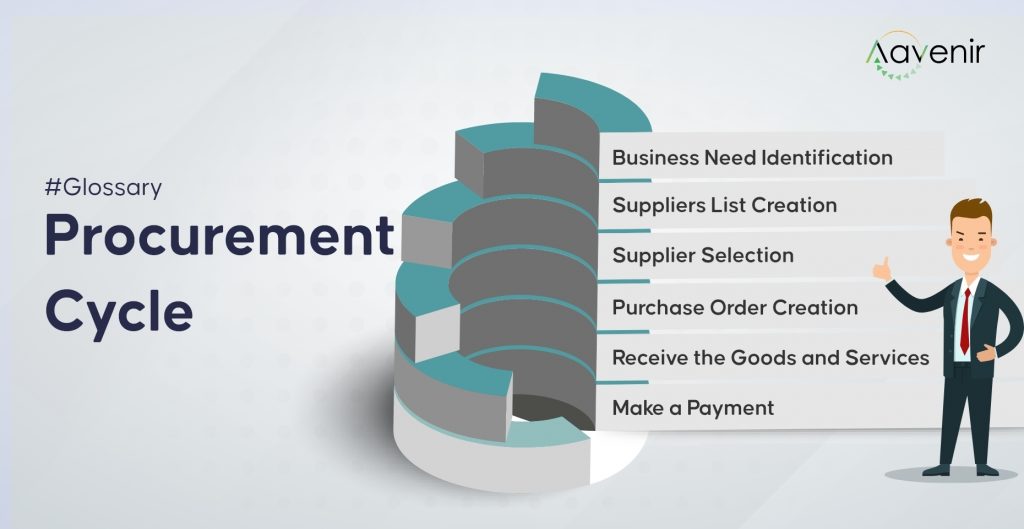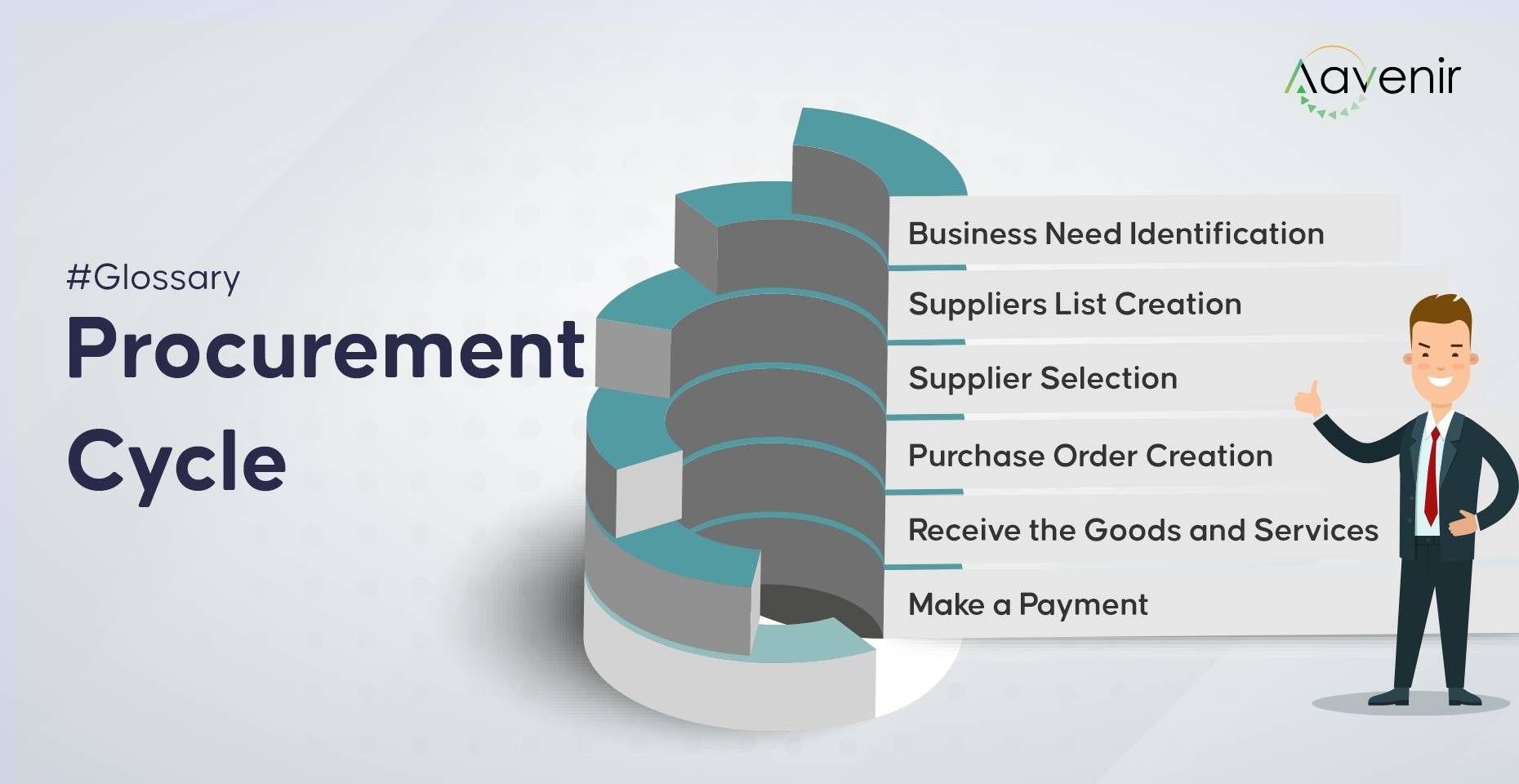What is Procurement Cycle?

Procurement is cyclical, which means it has a predetermined sequence of stages from beginning to end.
The very first step in the procurement process is identifying business requirements, which typically consist of six components. However, the organization’s size and nature determine how a procurement process appears. There is no one-size-fits-all when it comes to technique. Because what works for one may not work for another. One should customize the procurement process to achieve optimal effectiveness.
6 Steps to the Procurement Cycle
The procurement cycle is a sequence of events that result in purchasing goods and services. Organizations can save time and money by minimizing delivery times, optimizing pricing, and developing long-term relationships with reliable suppliers through an efficient procurement process. The procurement process comprises six steps:
1. Business Need Identification
The procurement process begins when a department or team within the company determines the need for a specific product, material, or service from a third-party partner. This business requirement could be for an internal purpose (for example, office supplies for meetings) or an external purpose (e.g., material for shoes the company will sell to consumers). During this phase, the company will determine the item, the quantity required, and the available budget.
2. Suppliers List Creation
After identifying the business needs, the company’s procurement team will compile a list of promising suppliers who provide the required goods or services. Sourcing suppliers is more than identifying possible organizations that can supply your requirements. In this stage of the procurement process, incorporating strategic sourcing best practices can help you achieve the best possible list of vendors to choose from.
Price should not be the main criteria for including a vendor on your supplier list. When evaluating different vendors, look into their reputation, production capacity, communication, and quality.

3. Supplier Selection & Contract Terms Negotiation
Negotiating the details of your contract is necessary once you have screened and chosen a supplier. This procurement stage is critical to developing long-term, mutually beneficial partnerships with your suppliers. It’s also an opportunity to use additional payment term features, such as dynamic discounting.
Please do homework before contract term discussions to get the most out of them. Examine previous contracts to see where you may cut corners, save money, and obtain a feel of a reasonable market rate. Consider other aspects of the agreement aside from the price, such as the production and the delivery schedule.
4. Purchase Order Creation
A purchase order or PO is a formal contract used to complete the acquisition of a product or service. The purchase order, which includes the overall costs, description of the item or service, quantities ordered, and the approval workflow, completes the contract negotiation. Typically, the purchasing business generates a purchase order that is disseminated internally, approved by top officials, and forwarded to the finance team.
Following purchase order clearance, the company’s finance team will submit the data to the supplier along with the following supplementary information:
1. The identification number
2. Payment conditions
3. Delivery information and additional specifics
The supplier must prepare and dispatch the agreed-upon goods and services upon receiving the purchase order.
5. Receive the Goods and Services
The supplier ideally prepares and sends the product or service to the company. Upon receiving receipt of the order, the company should document that the order arrived and double-check that the order was fulfilled accurately by the vendor. Then, create a record of the order and contact the supplier promptly if anything is missing or damaged.
6. Paperwork Reconciliation & Make a Payment
Some suppliers require payment before releasing goods. They send an invoice with a payment due date upon receipt of the purchase order, while others will bill regularly (quarterly, for instance). The company must reconcile the paperwork and finish the transaction when an invoice arrives. This includes verifying that the purchase order, invoice, and receipts are accurate and compliant.
This stage also assists businesses in gaining visibility into their cash flow. For example, companies can learn when payments are made and whether deliveries are completed on schedule. These documents should be saved for future audits and to build an information database for spending analysis.
Final Thoughts
Procurement does not end with these six processes. In fact, a procurement team spends time looking for methods to optimize procurement when they aren’t actively managing this process for a specific product or service. This is where sourcing and procurement software may help.
Tools like Aavenir RFPflow can help procurement teams gain insight into direct and indirect spending, build a trusted suppliers database, and reduce the time spent sourcing critical business inputs.
Procurement teams can do more than move a product with an AI-enabled sourcing tool by uncovering hidden savings, mitigating risks, and helping the business grow profitably.



